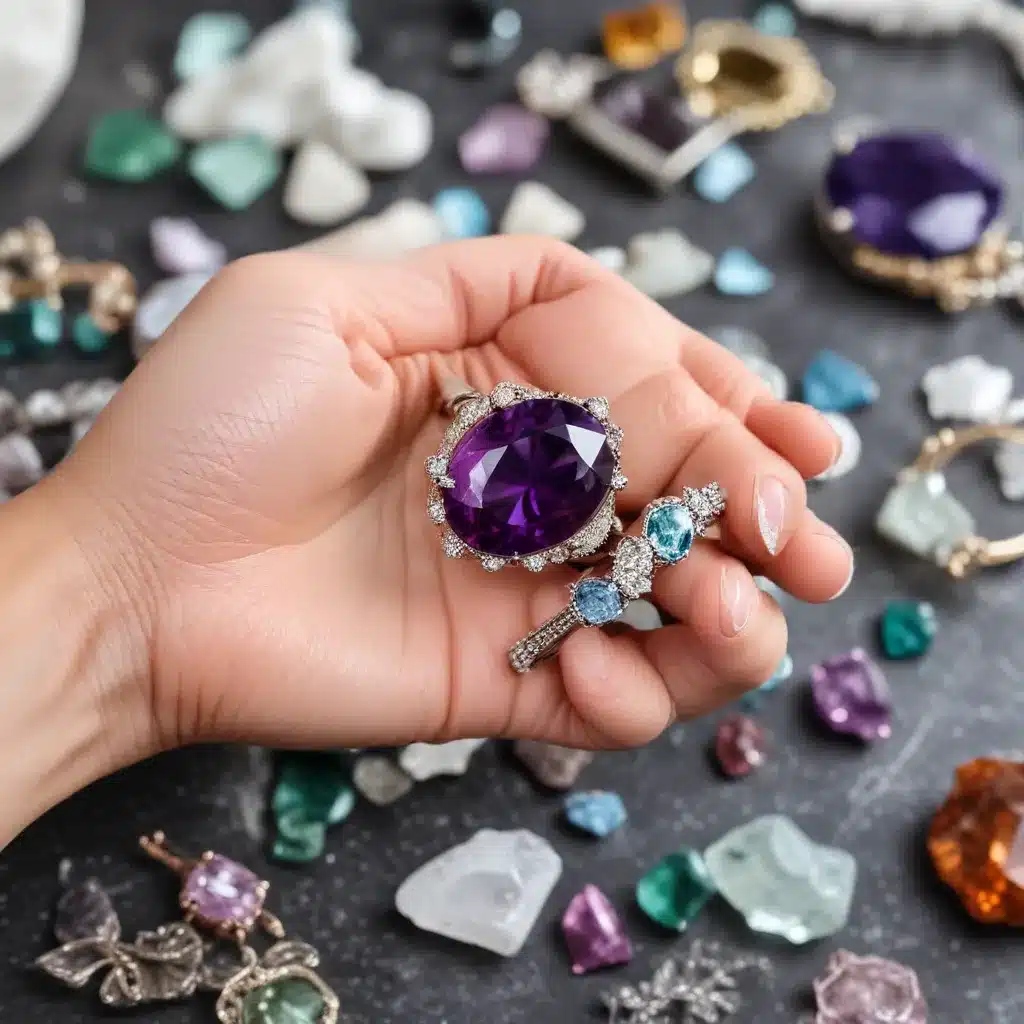
Gems are the heart and soul of our most precious jewelry, imbued with natural beauty, historic significance, and sentimental value. Whether an heirloom diamond, a vibrant-hued sapphire, or a captivating lab-grown moissanite, each gemstone deserves our utmost care and attention. By understanding the unique properties and maintenance needs of these dazzling treasures, we can ensure they continue to sparkle and shine for generations to come.
Precious Gems and Their Unique Properties
The rarest and most valuable gemstones, known as precious gems, include diamonds, rubies, sapphires, and emeralds. These remarkable stones are prized for their exceptional hardness, clarity, and brilliance. Diamonds, for instance, rank a formidable 10 on the Mohs hardness scale, making them incredibly resistant to scratches and chips. Rubies and sapphires, both members of the corundum family, also boast a Mohs hardness of 9, endowing them with remarkable durability.
In contrast, semi-precious gems such as amethyst, citrine, and garnet tend to have a lower Mohs hardness, typically ranging from 7 to 8. While still beautiful and cherished, these stones may require more delicate handling to preserve their integrity.
The Rise of Synthetic and Simulated Gems
Advancements in technology have ushered in the era of synthetic and simulated gemstones. Moissanite, a lab-created gem, has gained popularity as a more affordable alternative to diamonds, with a similar appearance and hardness of 9.5 on the Mohs scale. Cubic zirconia, on the other hand, is a simulated diamond, being a man-made material that mimics the look of a diamond but with a lower hardness of 8-8.5. Both synthetic and simulated gems offer stunning visual appeal and durability, making them a viable choice for jewelry enthusiasts.
Proper Jewelry Storage and Organization
Keeping your gemstone jewelry safe and organized is the first step in preserving its luster and longevity. Store each piece in a dedicated jewelry box or pouch, separating delicate items and avoiding direct contact between pieces. This not only prevents scratches and tangles but also helps maintain the prong settings and mountings that secure your precious stones.
When not in use, it’s best to store your jewelry in a cool, dry place, away from direct sunlight, humidity, and extreme temperature changes. Sudden shifts in temperature can cause gemstones to crack or discolor over time. Consider investing in a jewelry safe or climate-controlled storage unit for particularly valuable pieces.
Gentle Cleaning Techniques for Gemstones
Proper cleaning is essential for maintaining the brilliance and clarity of your gemstone jewelry. For most stones, a simple solution of warm, soapy water and a soft-bristled brush is the safest approach. Avoid using harsh chemicals, abrasives, or ultrasonic cleaners, which can potentially damage delicate gems or loosen their settings.
Moissanite and diamond are among the most resilient gems, and can be safely cleaned in an ultrasonic cleaner when needed. However, exercise caution with softer stones like emeralds, opals, and pearls, which may be vulnerable to the intense vibrations. For these gems, stick to the gentle soap-and-water method, gently scrubbing with a soft toothbrush.
Maintaining Gemstone Settings and Mountings
The setting and mounting of your gemstone jewelry play a crucial role in its longevity. Over time, the prongs that hold the stone in place can become worn or bent, potentially leading to a loose or even lost gem. Regularly inspect your jewelry for any signs of wear, such as loose settings or damaged prongs, and have them repaired by a qualified jeweler.
Additionally, be mindful of your jewelry’s exposure to chemicals, impacts, and abrasive surfaces, all of which can compromise the structural integrity of the setting. Removing rings and bracelets before engaging in activities like cleaning, cooking, or exercising can help mitigate the risk of damage.
Understanding Gem Cut and Clarity
The cut and clarity of a gemstone are significant factors in its overall beauty and durability. A well-proportioned cut will maximize the stone’s brilliance, fire, and scintillation, while a poorly cut gem may appear lifeless or dull.
Clarity, on the other hand, refers to the presence and extent of internal inclusions or blemishes within the stone. Gems with higher clarity grades, such as flawless or eye-clean, are less prone to chipping or cracking over time. When caring for your jewelry, be mindful of these characteristics and avoid actions that could potentially compromise the stone’s structural integrity.
The Importance of Gemstone Hardness and Durability
The Mohs hardness scale, which ranges from 1 (softest) to 10 (hardest), is a crucial indicator of a gemstone’s resistance to scratches and chips. Diamonds, ranking at 10, are the undisputed champions of durability, while softer gems like pearls and opals (Mohs 6-7) require more delicate handling.
When caring for your jewelry, remember to keep harder stones separate from their more delicate counterparts, as they can inadvertently scratch or damage the softer gems. Proper storage and gentle cleaning techniques are especially important for protecting these vulnerable stones.
Gemstone Treatments and Enhancements
Many gemstones, both natural and synthetic, undergo various treatments and enhancements to improve their appearance and durability. Heating, irradiation, oiling, and coating are some common processes used to enhance a stone’s color, clarity, or stability.
While these treatments are generally accepted in the jewelry industry, it’s important to understand their impact on the gemstone’s care and longevity. Certain enhanced gems may be more sensitive to heat, chemicals, or ultrasonic cleaning, requiring specialized handling and maintenance.
By understanding the unique properties and care requirements of your gemstone jewelry, you can ensure it remains a cherished part of your collection for years to come. Whether you’re the proud owner of a classic diamond solitaire or a stunning lab-created moissanite, following these guidelines will help keep your pieces sparkling and well-preserved, ready to be passed down through generations.
For more information on our wide selection of gemstone jewelry, please visit Shelby Gem Factory.

